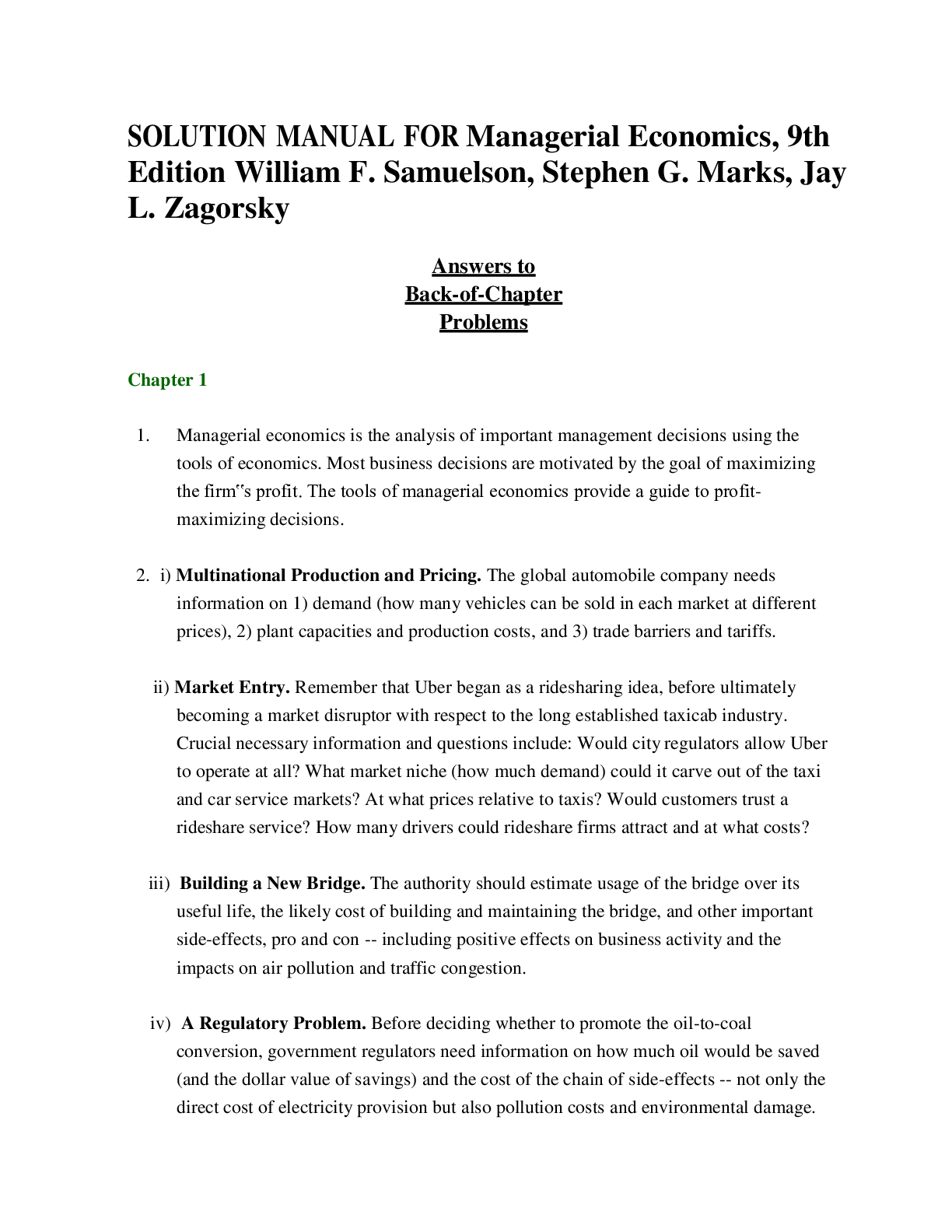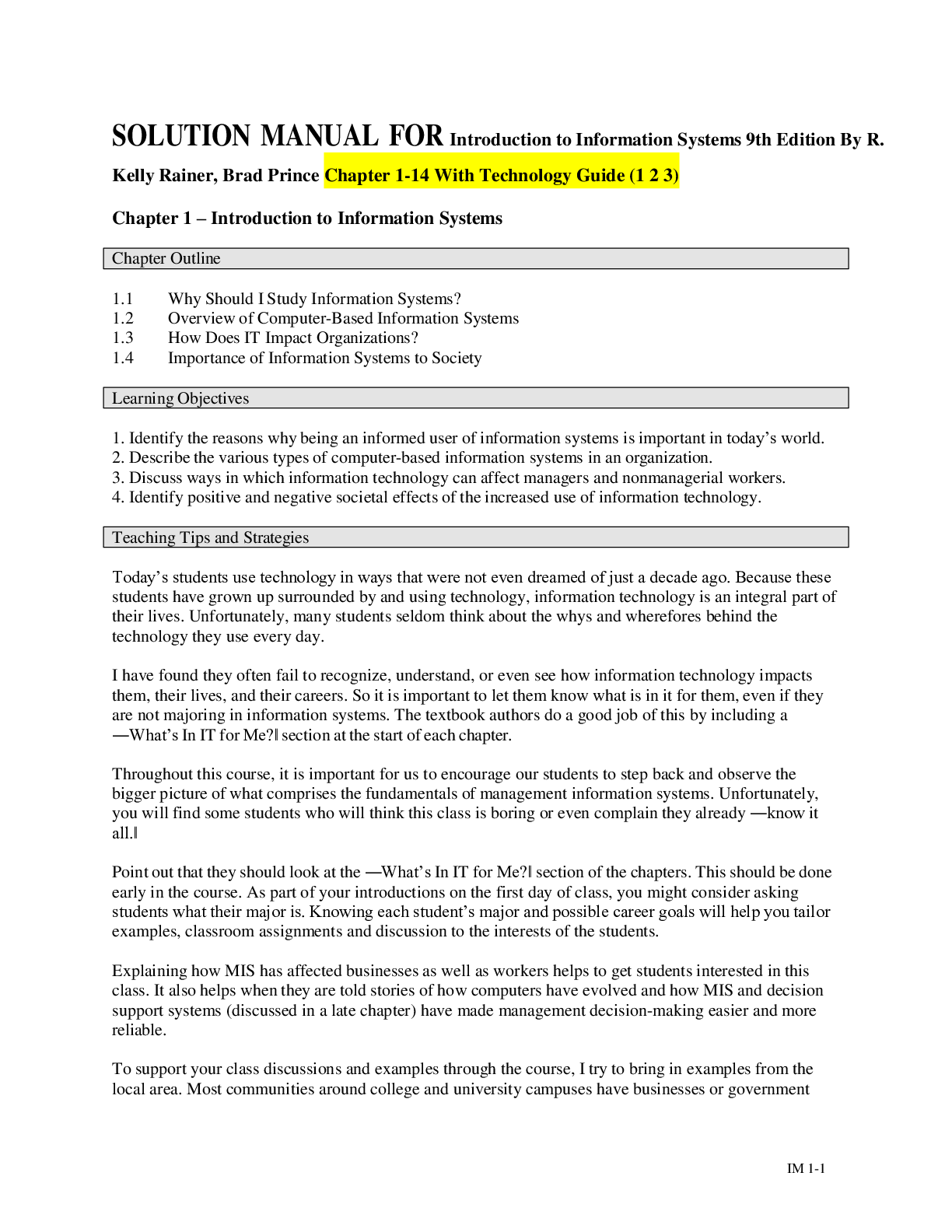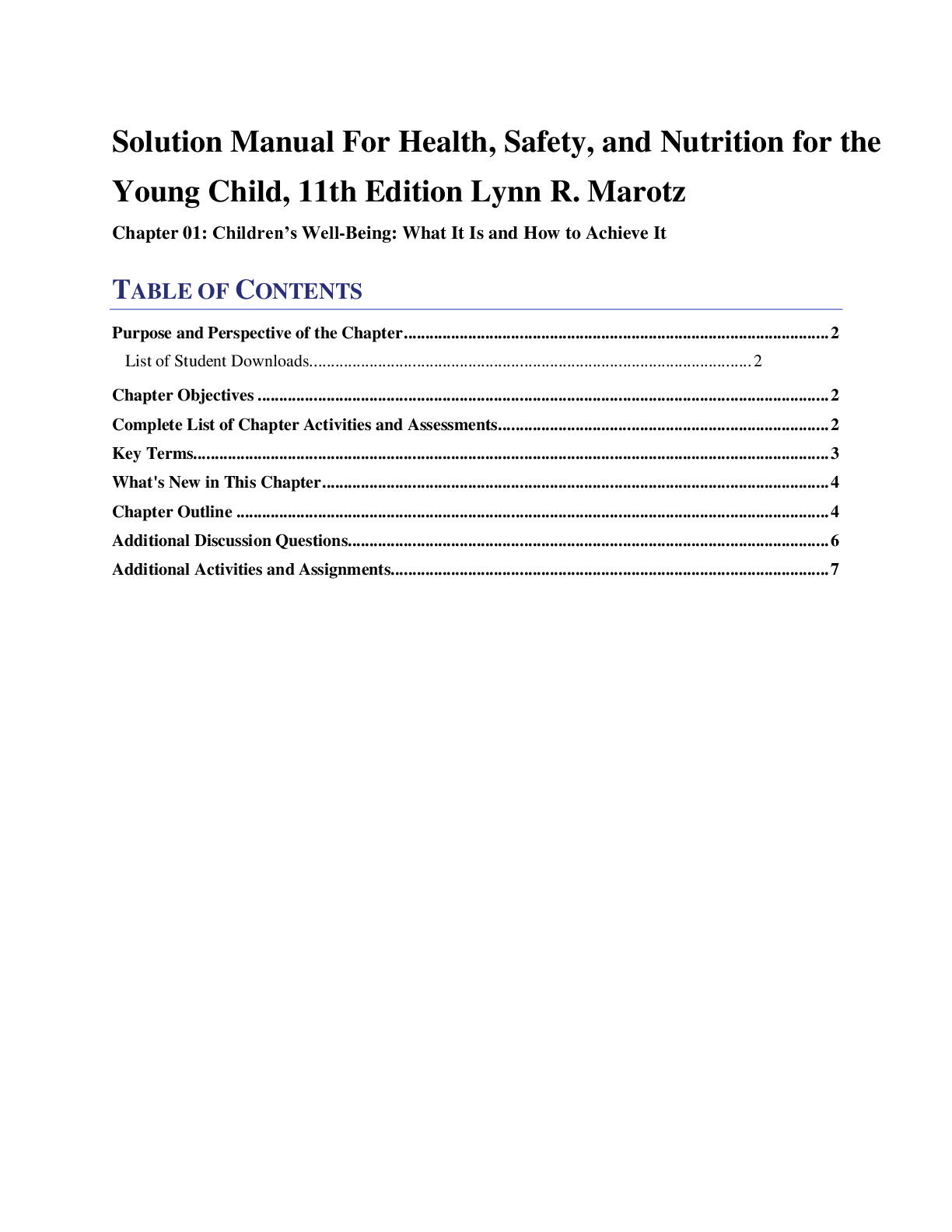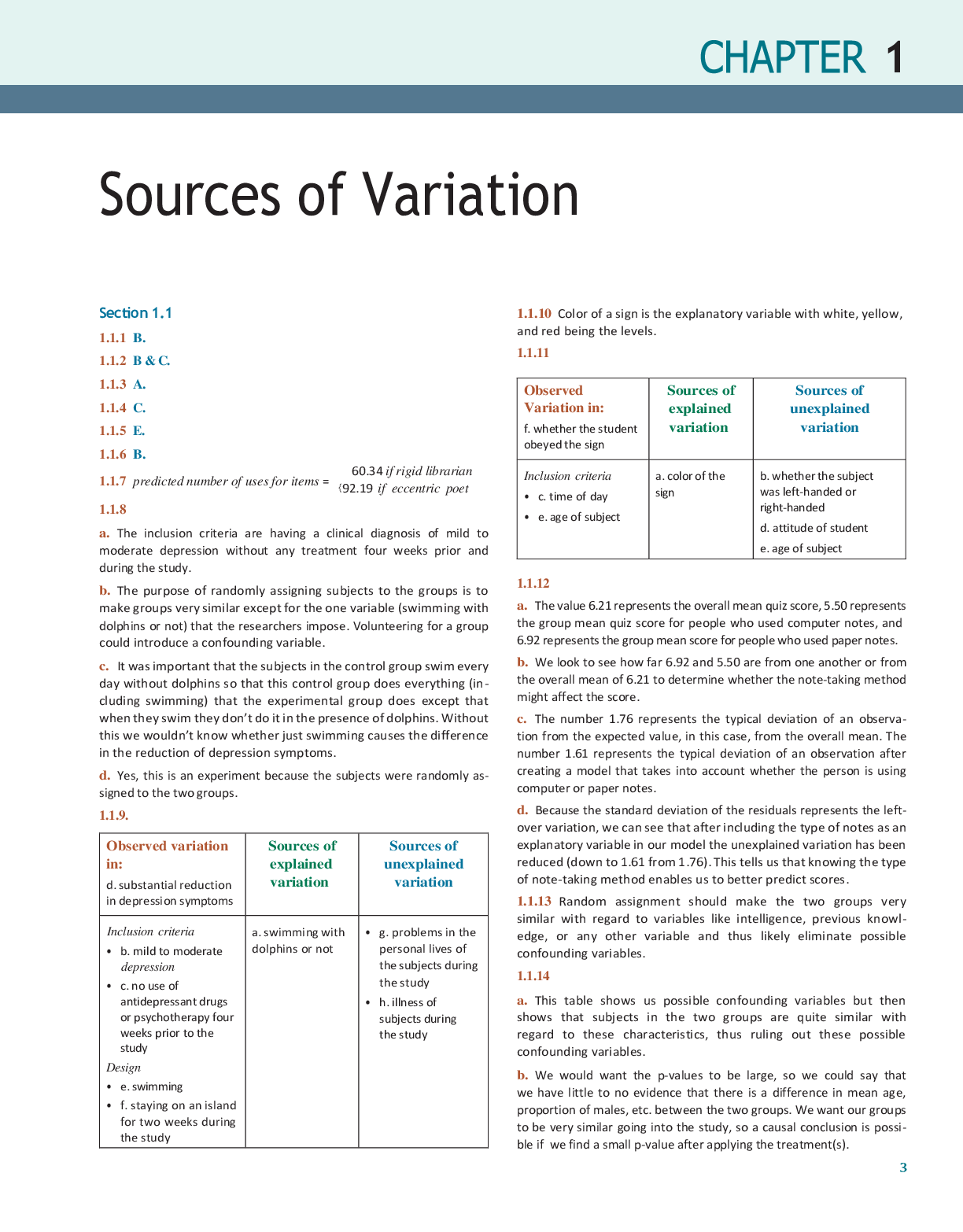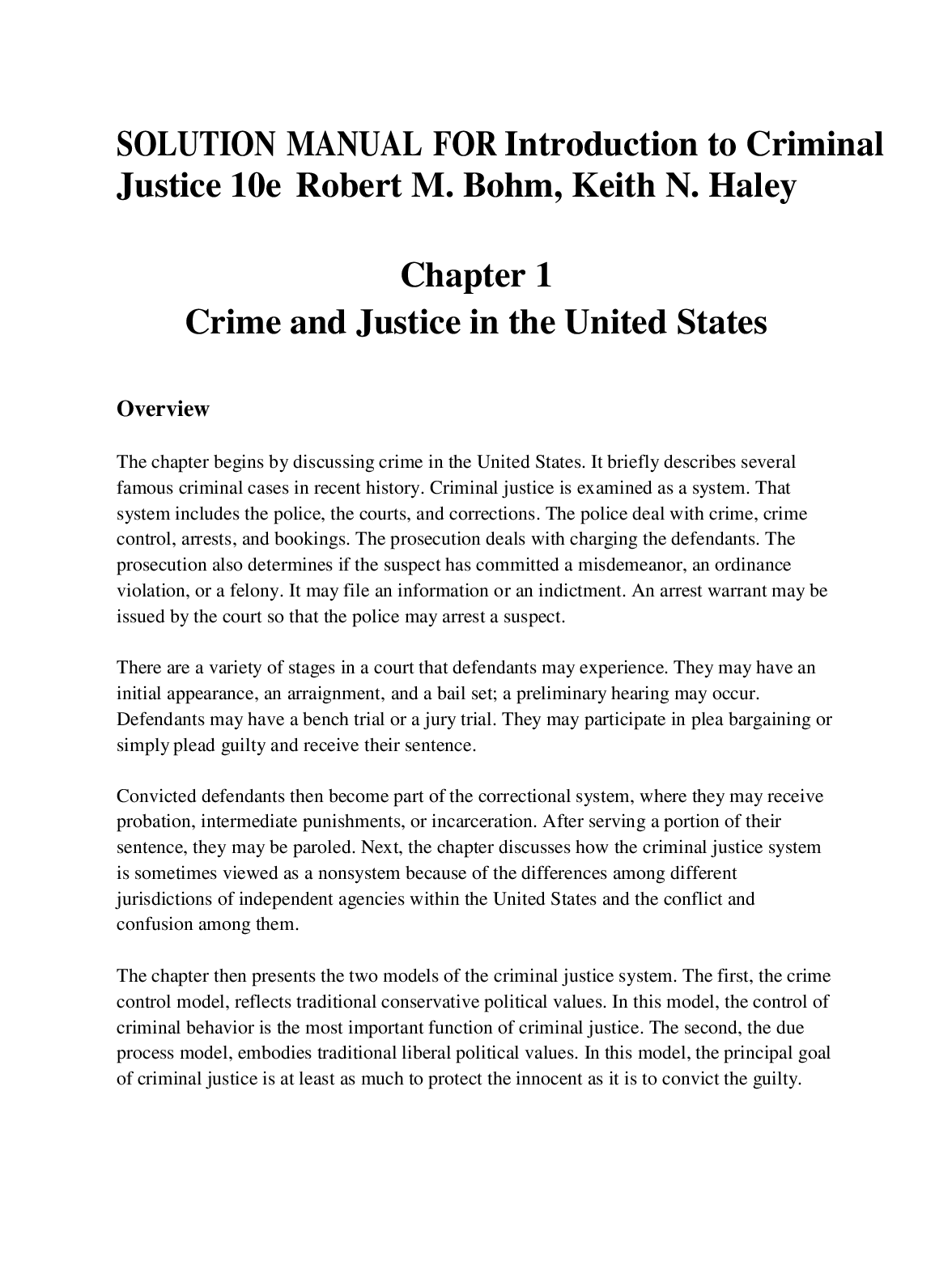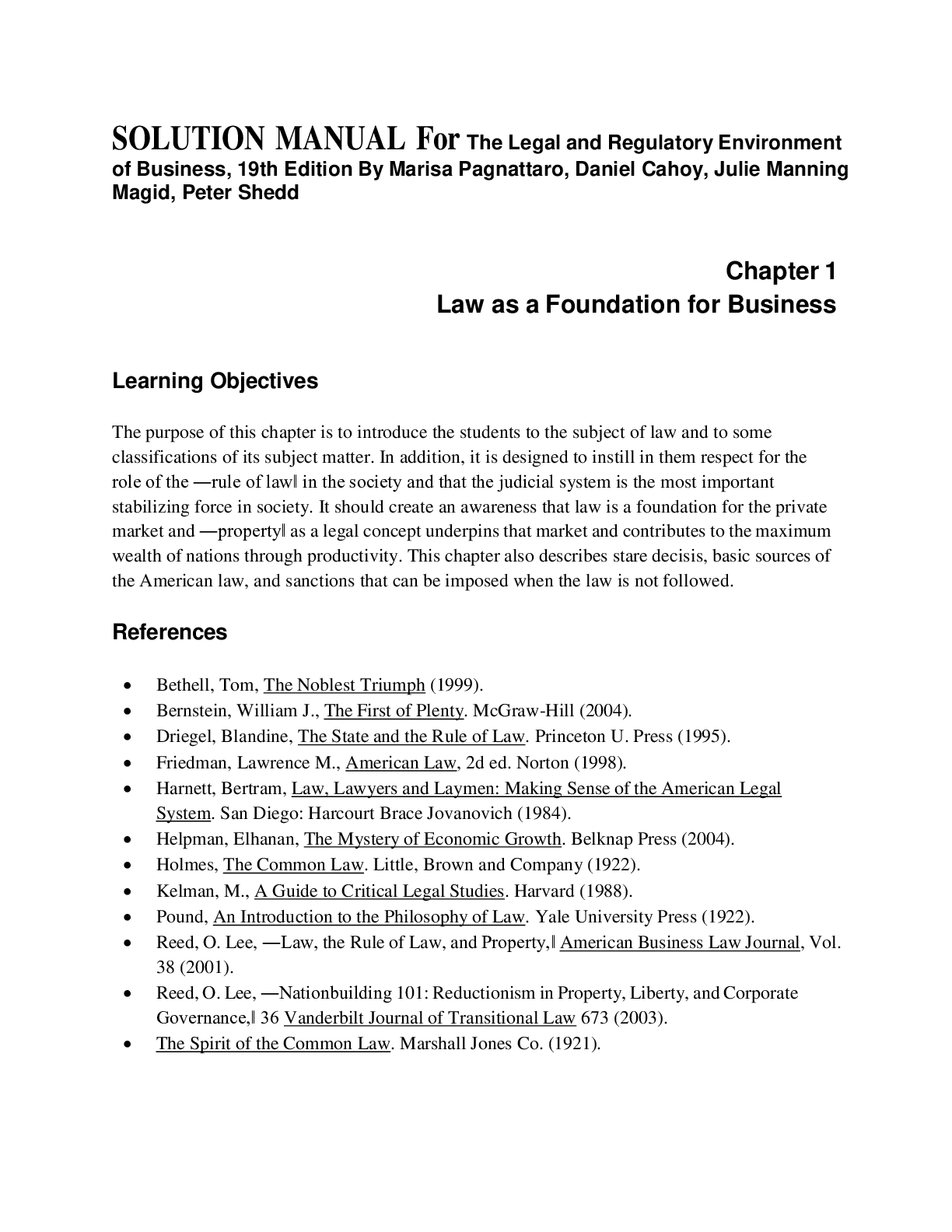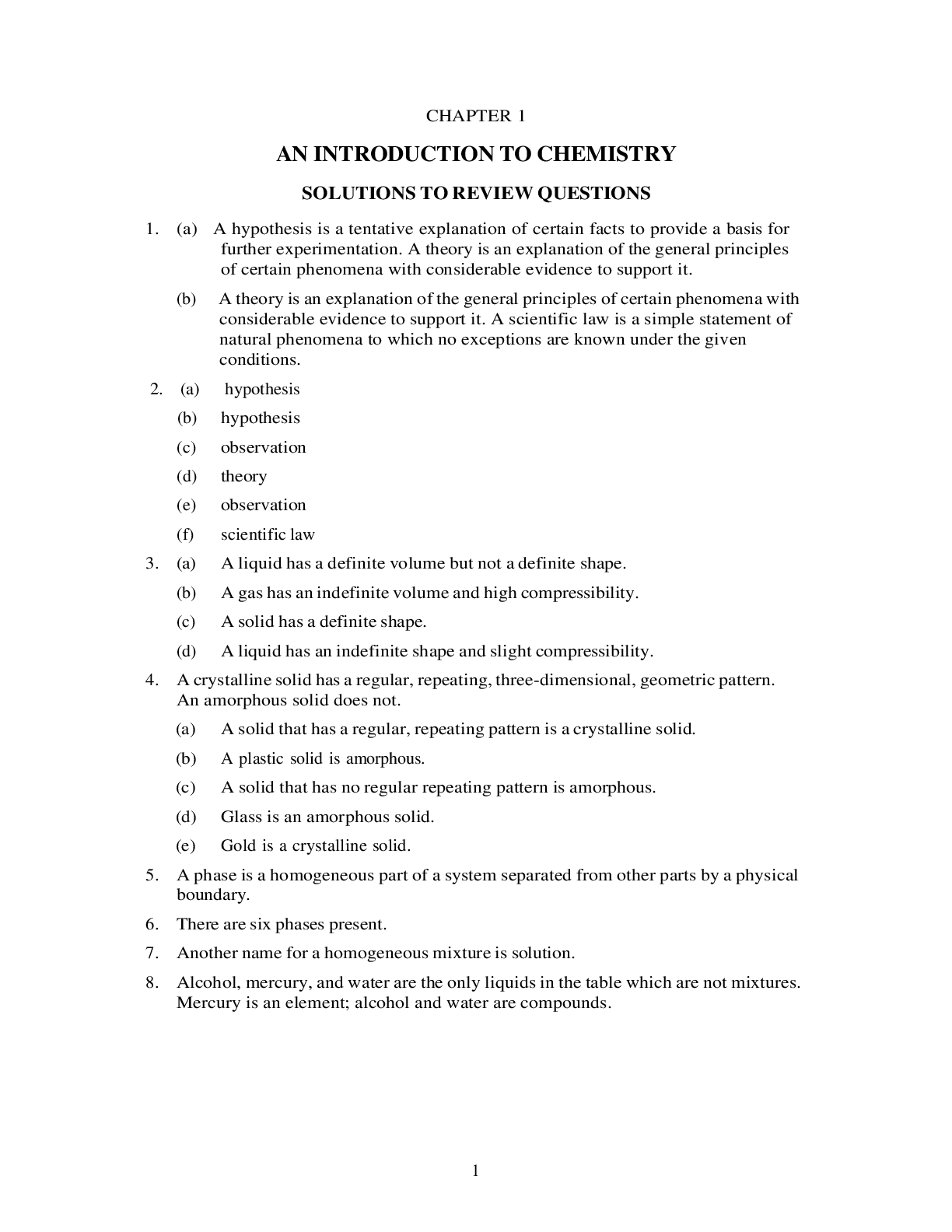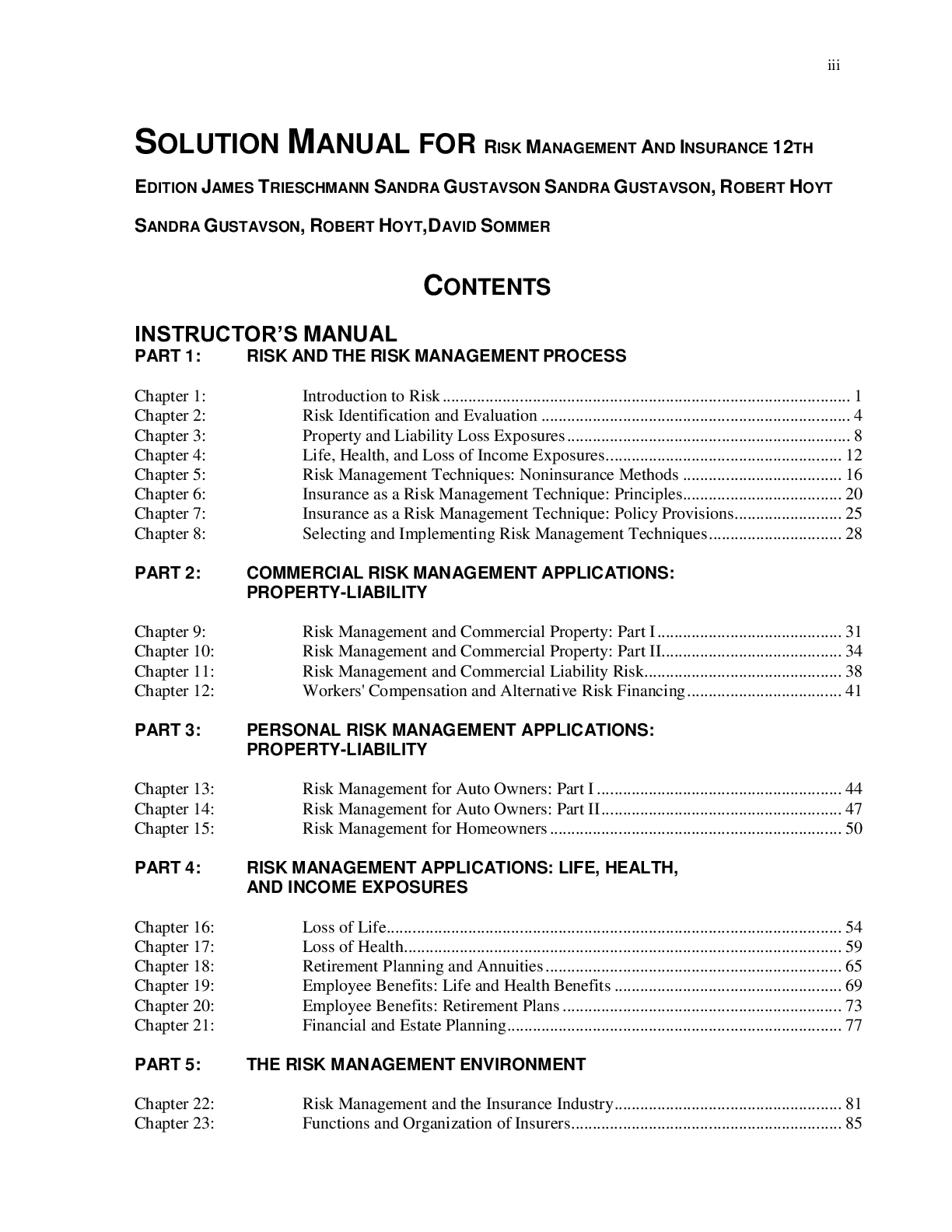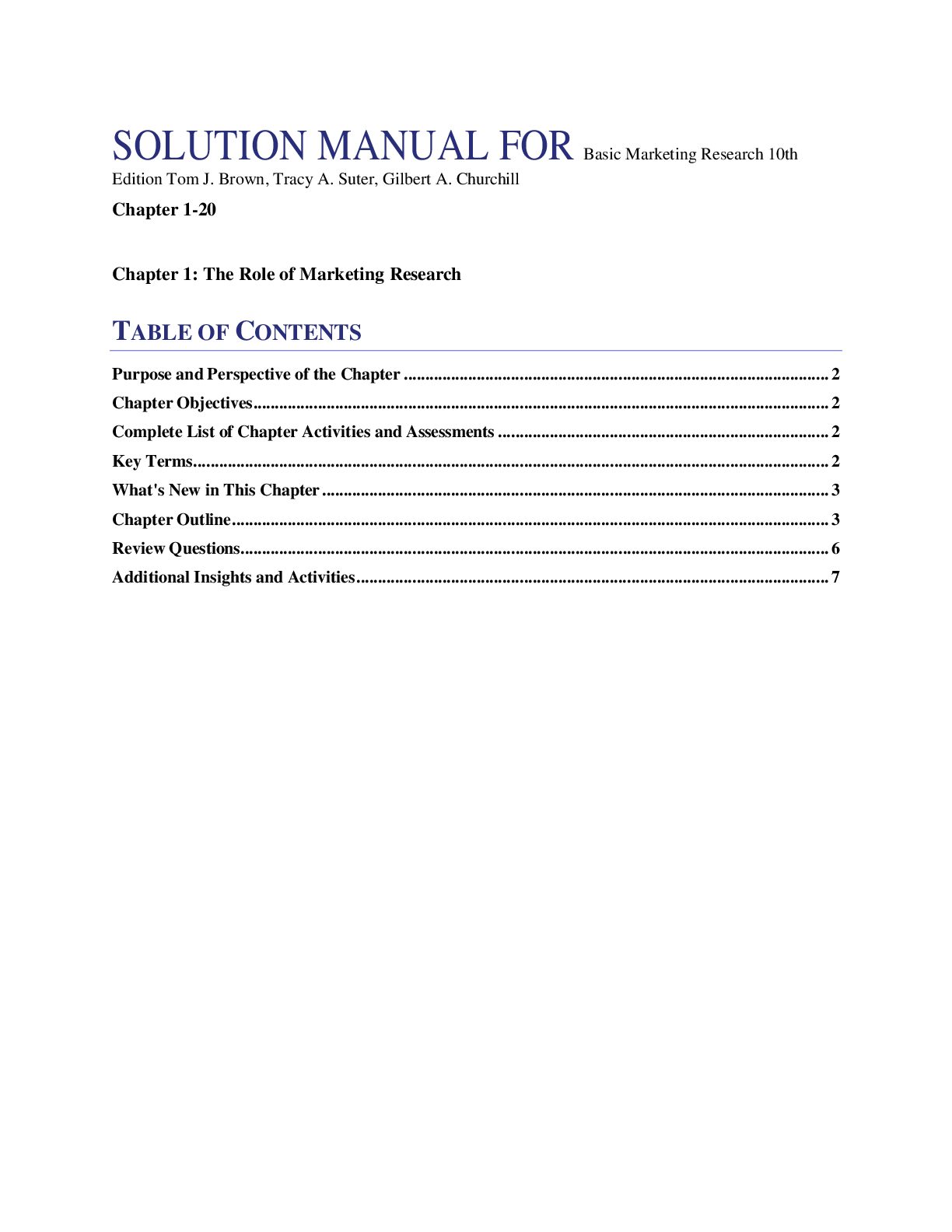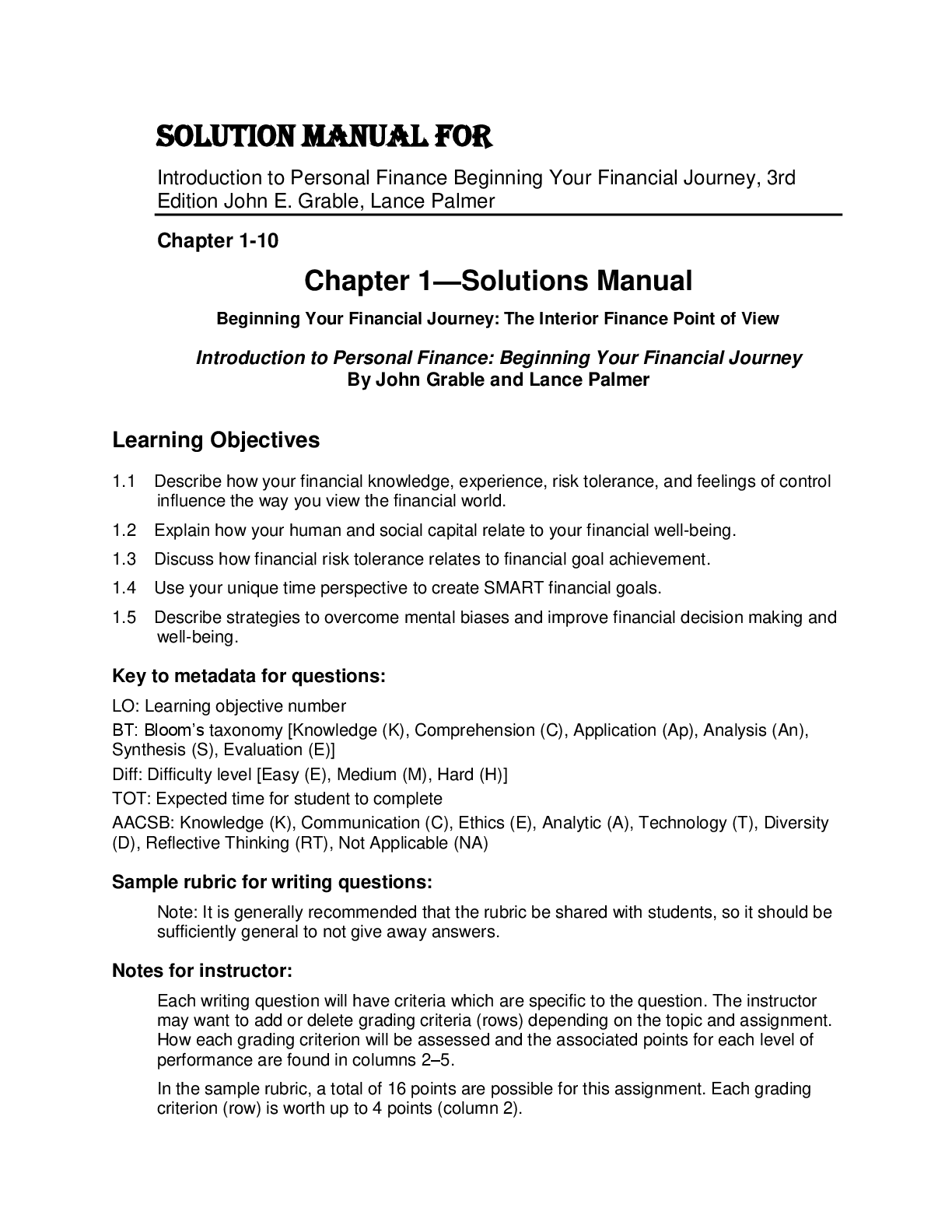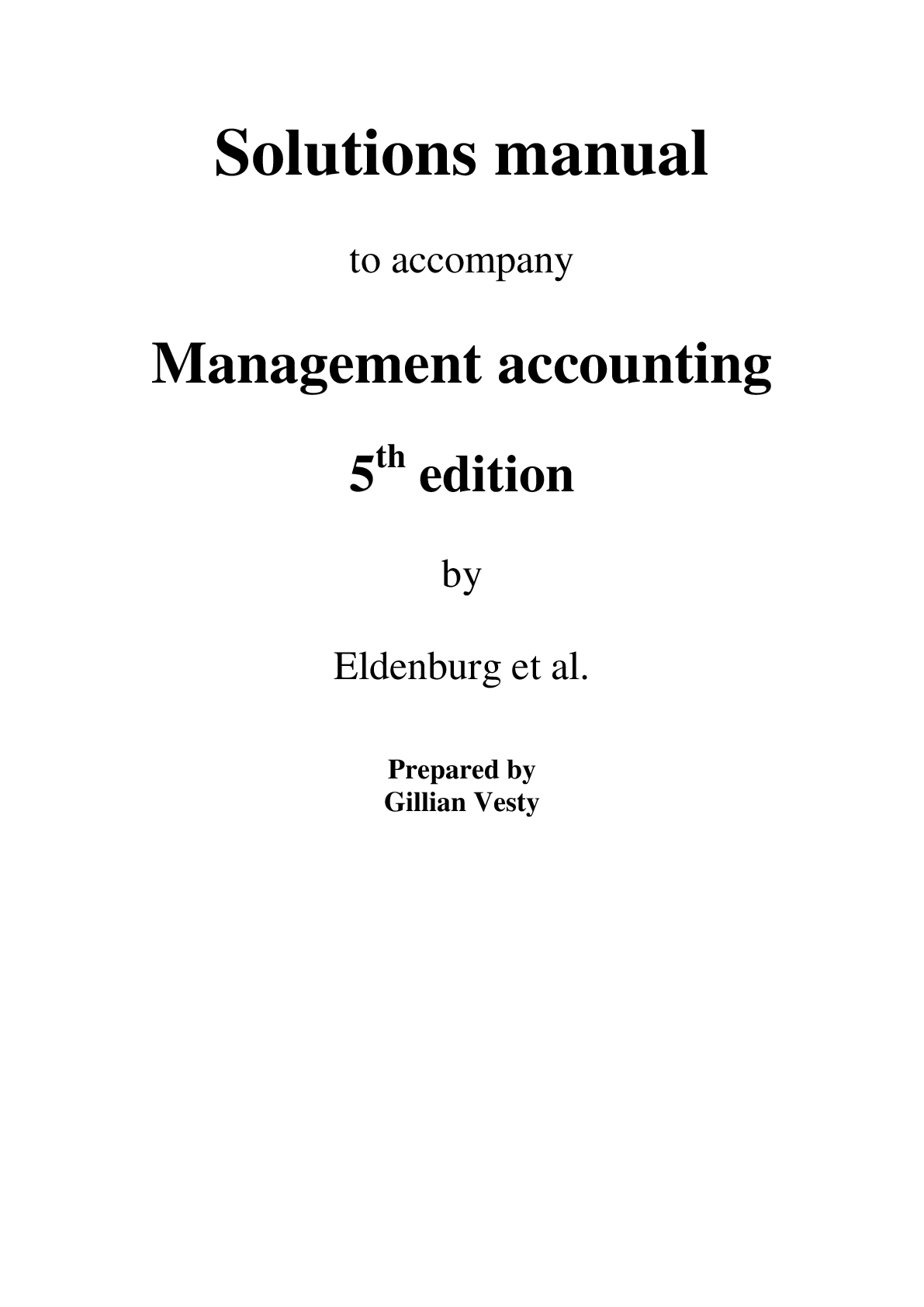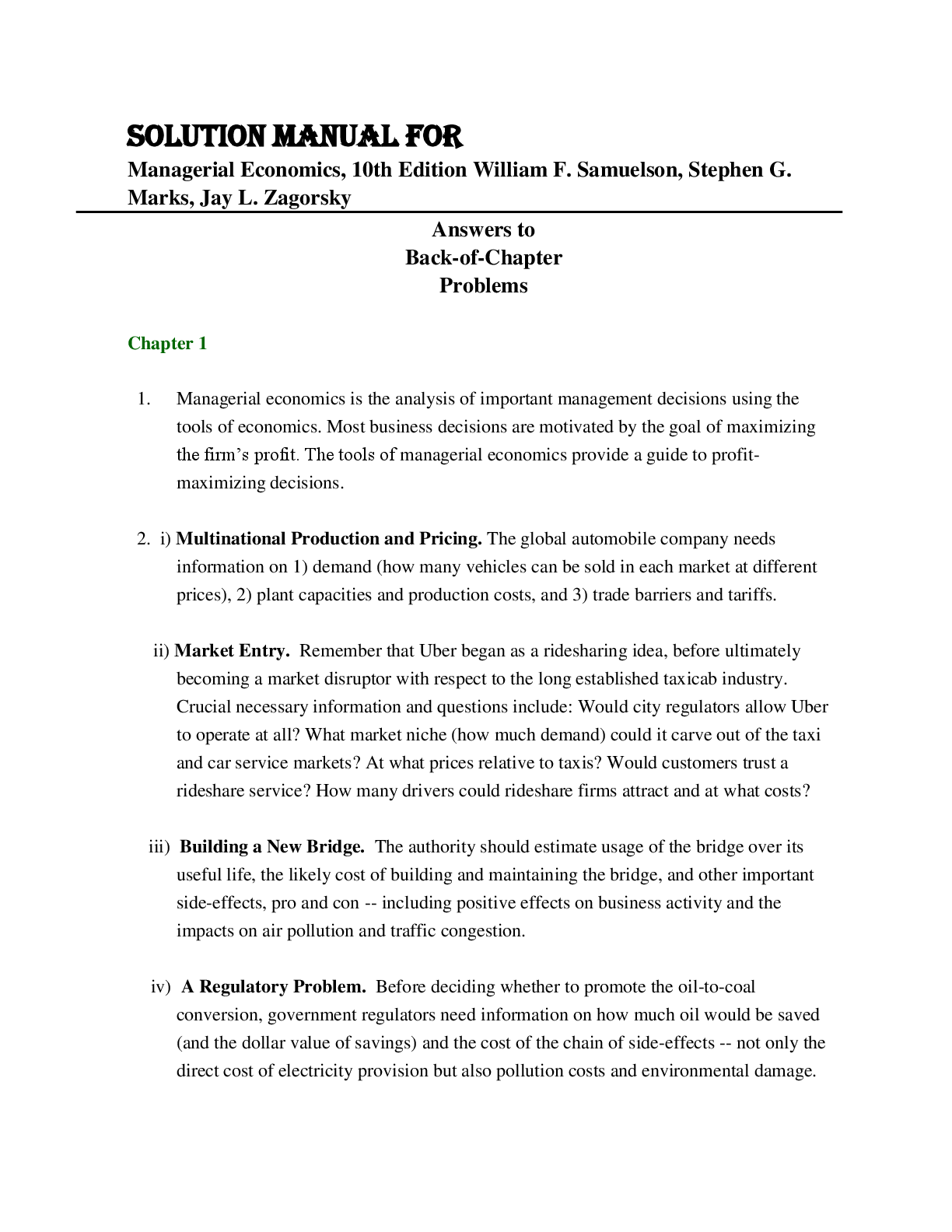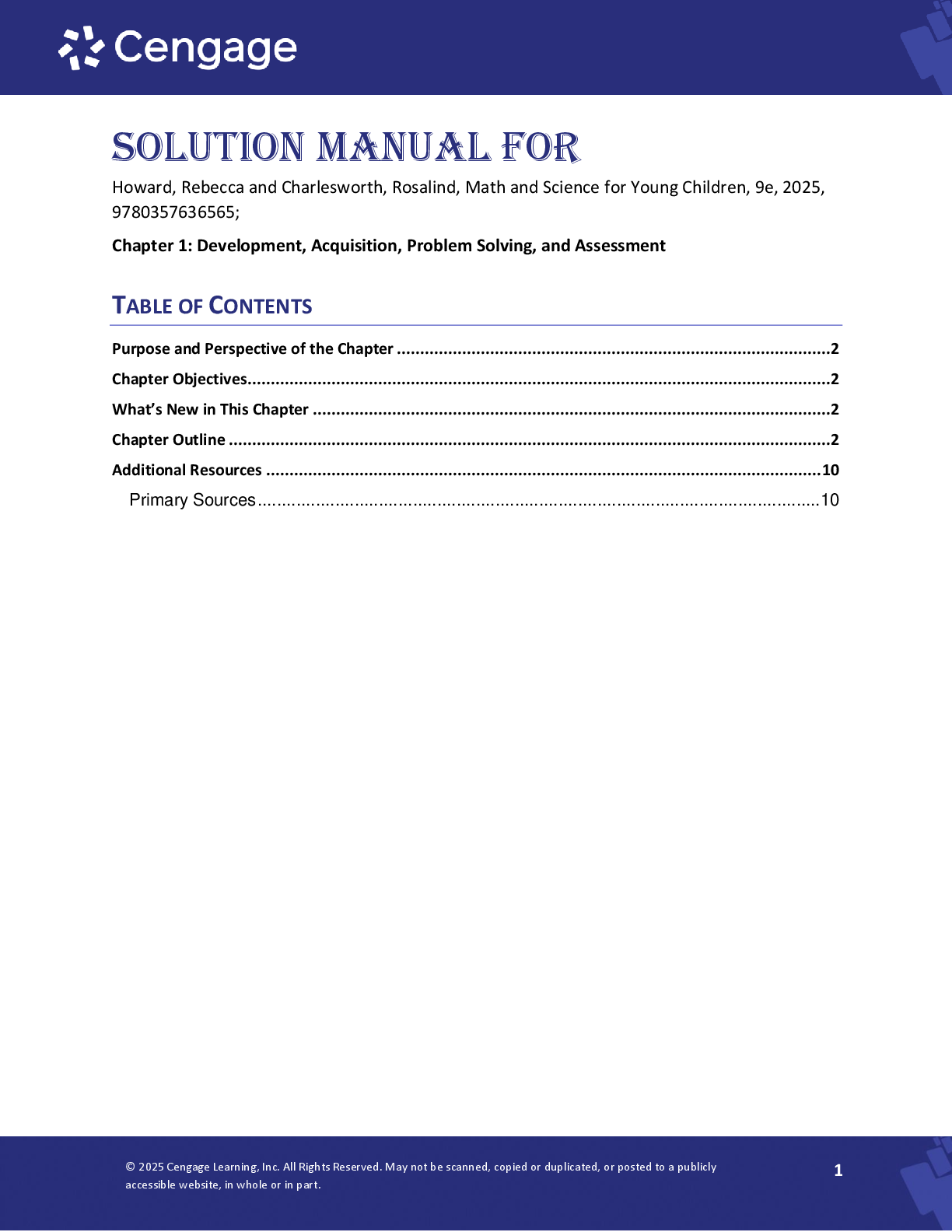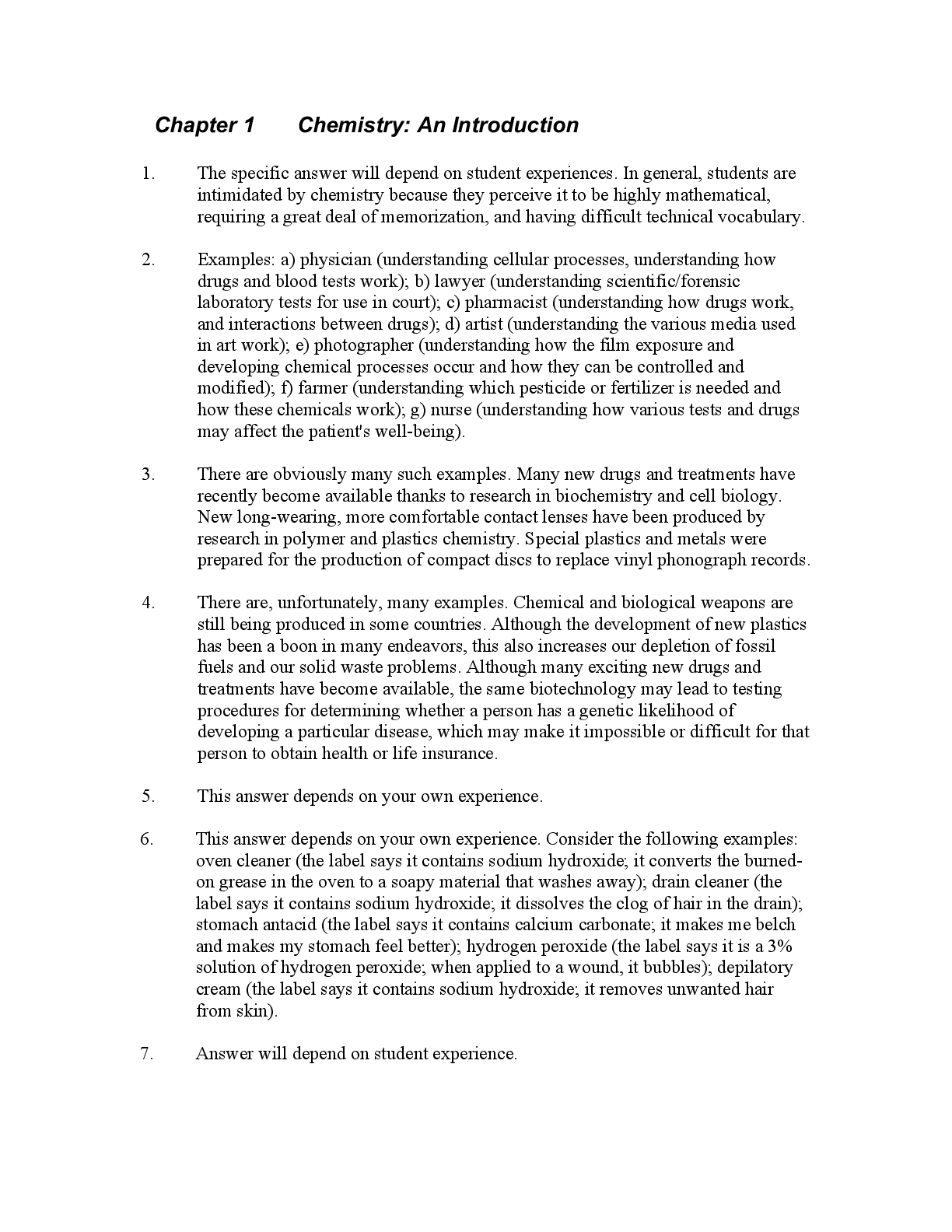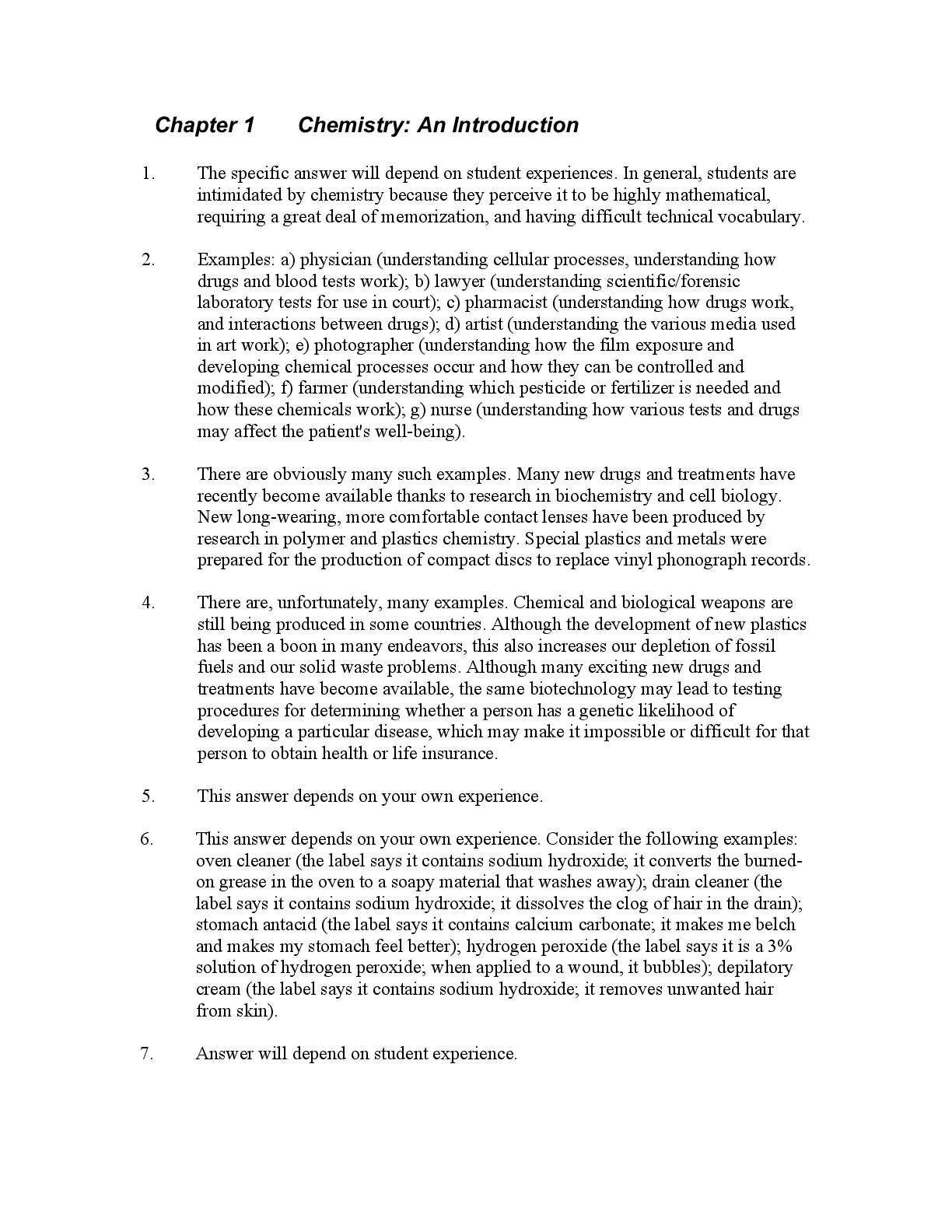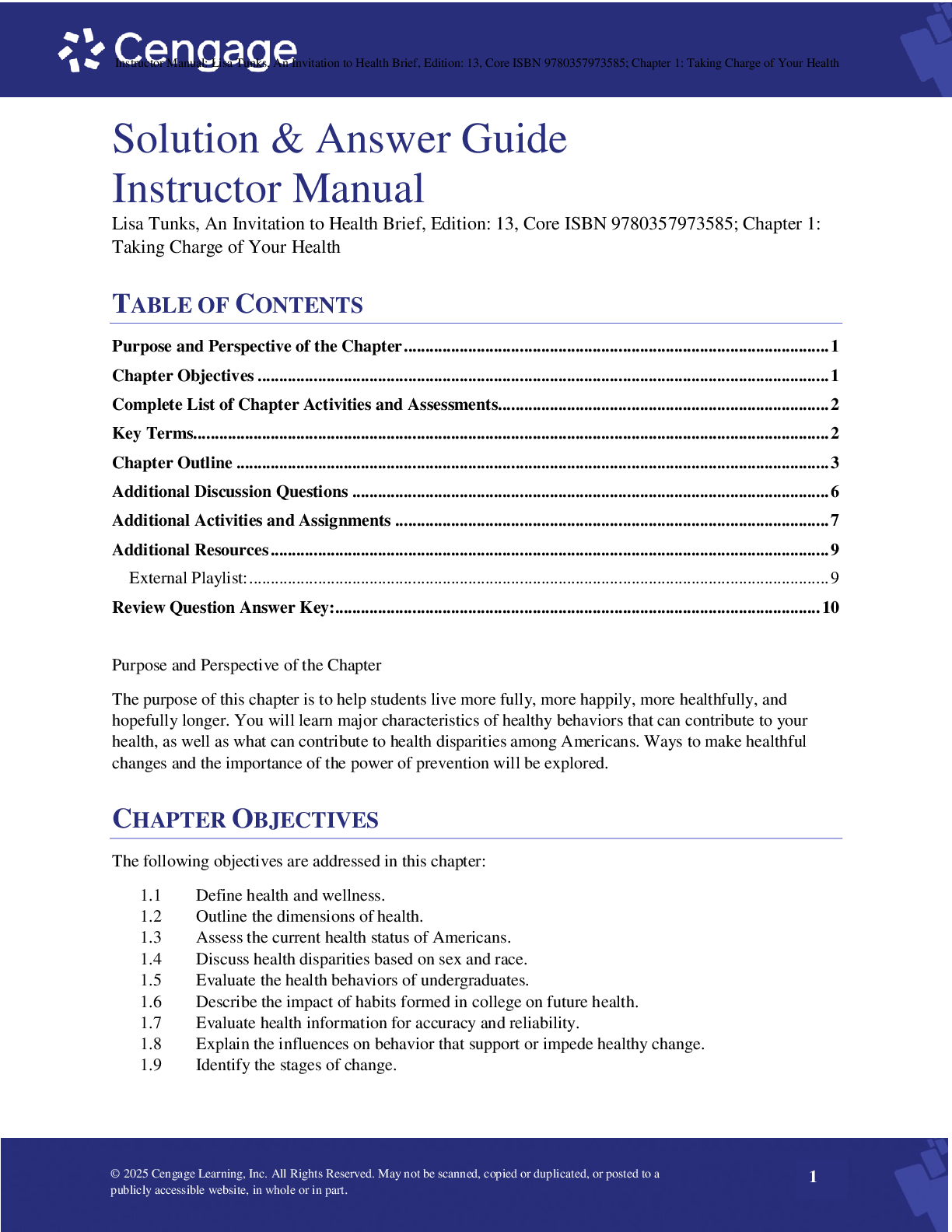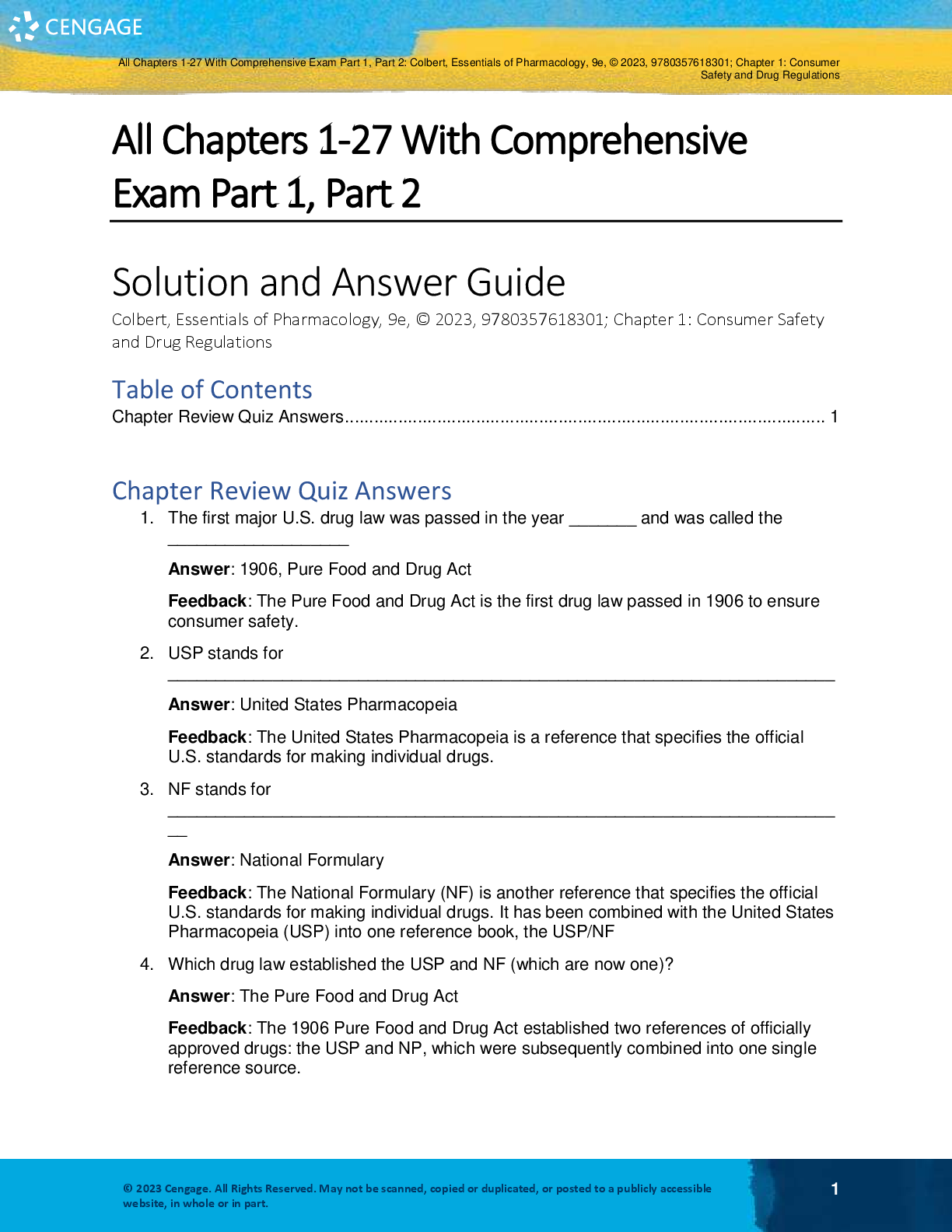Education > SOLUTIONS MANUAL > Solution Manual for Fundamentals of Python First Programs, 3rd Edition Kenneth A. Lambert (All)
Solution Manual for Fundamentals of Python First Programs, 3rd Edition Kenneth A. Lambert
Document Content and Description Below
Solution Manual for Fundamentals of Python First Programs, 3rd Edition Kenneth A. Lambert-1. List three common types of computing agents. Solution: Human beings, desktop computers, cell phones 2. W ... rite an algorithm that describes the second part of the process of making change (counting out the coins and bills). Solution: There are various ways to do this, but here is one: Repeat Select the largest unit of money that is less than or equal to the remaining change Subtract this unit from the remaining change Until the remaining change is 0 The collection of units selected represent the change 3. Write an algorithm that describes a common task, such as baking a cake. © 2024 Cengage. All Rights Reserved. May not be scanned, copied or duplicated, or posted to a publicly accessible 2 website, in whole or in part. Solution: There are various ways to do this, but here is one: Preheat an oven to 375 degrees Add 1 cup of water and 1 egg to a mixing bowl Beat the liquid mixture in the bowl until the ingredients are blended Add the contents of a boxed cake mix to the mixing bowl Beat the mixture in the bowl until the ingredients are blended Pour the contents of the mixing bowl into a lightly greased cake pan Bake the cake in the oven for 45 minutes 4. Describe an instruction that is not well defined and thus could not be included as a step in an algorithm. Give an example of such an instruction. Solution: Attempting to divide a number by 0 5. In what sense is a laptop computer a general-purpose problem-solving machine? Solution: A laptop computer is a general-purpose problem-solving machine because it is programmable and can solve any problem for which there is an algorithm. 6. List four devices that use computers and describe the information that they process. (Hint: Think of the inputs and outputs of the devices.) Solution: Digital camera—images, music player—sound, cell phone—text, ATM—numbers EXERCISE 1.2 1. List two examples of input devices and two examples of output devices. Solution: Input devices—keyboard and mouse, output devices—monitor and speakers 2. What does the central processing unit (CPU) do? Solution: The CPU fetches, decodes, and executes instructions. 3. How is information represented in hardware memory? Solution: Information is represented using binary notation, which in hardware is a pattern of voltage levels [Show More]
Last updated: 9 months ago
Preview 5 out of 164 pages

Loading document previews ...
Buy this document to get the full access instantly
Instant Download Access after purchase
Buy NowInstant download
We Accept:

Reviews( 0 )
$20.00
Can't find what you want? Try our AI powered Search
Document information
Connected school, study & course
About the document
Uploaded On
Oct 23, 2024
Number of pages
164
Written in
All
Additional information
This document has been written for:
Uploaded
Oct 23, 2024
Downloads
0
Views
64


